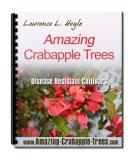VEGETABLE GARDENING FOR EVERYONE
Vegetable gardening and gardening in general still ranks as America’s leading hobby.
During WWII, because of the large quantity of food needed to supply our troops, Americans were advised to make up for the shortages by growing their own vegetables in what were called “Victory Gardens”. If you didn’t have space around your own home the villages, parks and unused local lands, provided plots on which you could reserve and cultivate your own vegetable garden. These became so popular that even the Railroads provided plots on their track sidings near community stops along their routes. In a very short time millions of “Victory Gardens” became commonplace throughout the country and proved to be successful to many who had never grown anything before. It was reported later that this success was due largely to the camaraderie which was enjoyed by the participants.
If you were fortunate enough to have lived through this time in our history, and witnessed the effect it had on people, you shall have known the true meaning of friendship and solidarity, and what was called a solid contribution to the war effort.
ECHOES OF HISTORY
In this day and age, things have changed. Much of our produce is being imported from other countries, some of which has been genetically altered. There is a growing demand for so-called organically grown foods, most of which is grown locally. More and more consumers are reading labels and paying more attention to food ingredients than ever before mainly because they have read or heard about pesticides and preservatives that can be harmful for human consumption. This is where, if we listen closely, we can hear the echoes of history.
The “Victory Gardens” of WWII were promoted to stem a potential food shortage in order to feed our troops. But this call-to-arms, so to speak, is different and is striking at our fundamental need for unadulterated, wholesome food. There is a growing concern among domestic growers and dieticians toward urging people to grow their own vegetables to free themselves of unwanted additives and preservatives. So now history echoes in another way.
For those of us who would like to heed this advice it becomes a matter of having a suitable plot of land of your own on which to grow your garden, or a locally designated community plot. As with any major endeavor, planning ahead is essential to a successful outcome. It would be a gross error to just throw down some seeds and expect a harvest in 3 or 4 months. While Jack’s beanstalk may have happened that way, it is after all, a fairy tale.
Have A Great Story About This Topic?
Do you have a great story about this? Share it!
Order Your New Landscape Design Today!
Always Design Before You Plant!
Click The Above Link To Get Your Dream Design Started Now!

Privacy Disclaimer About Contact This Site Built: Solo Build It
Copyright © 2003 - 2023 by Web-Landscape-Design-Ideas.com.
All rights reserved.


